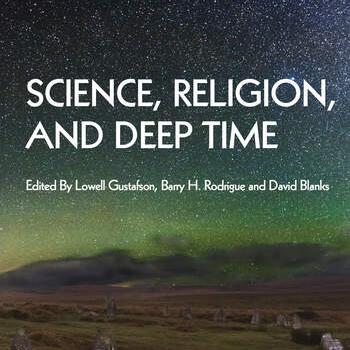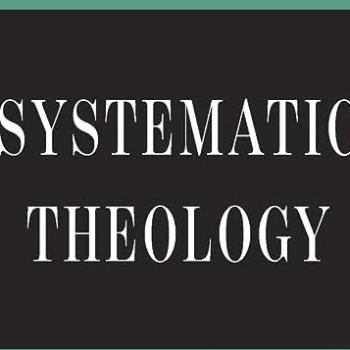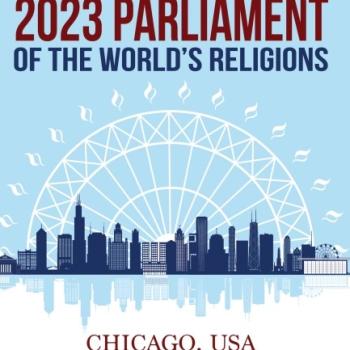What is Blasphemy?
ST 2007 What is Blasphemy?
What is blasphemy? Blasphemy is in the news, according to Associated Press.
“A recent string of public Quran desecrations by a handful of anti-Islam activists in Sweden – and more recently in neighboring Denmark – has sparked angry demonstrations in Muslim countries. In Egypt, Al-Azhar Mosque, the oldest Sunni institution in the Muslim world, urged Muslims on Tuesday [July 25, 2023] to boycott Swedish and Danish products.”
In retailiation, Muslims in Iraq and Pakistan have publicly burned the Swedish flag. De facto, this is a secular form of counter-blasphemy because the flag is thought to emit symbolic valence for Swedes.

So, let’s ask: what is blasphemy? There are three answers. There are three types of blasphemy.
Blasphemy type one takes the form of sacrilege. It is behavior that overtly and directly denies what is sacred. Or it insults someone who reveres what is sacred. Type one blasphemy is anti-God behavior and nasty to religious persons.
Blasphemy type two is more subtle. It consists of pursuing evil in the name of the good. It includes whitewashing violence in the name of God. In God’s name the blasphemer scapegoats, punishes, or destroys.
Blasphemy type three belongs in the category of radical evil. This form of blasphemy relies on the symbols of evil—such as the symbol of Satan–to pursue destructive action.
Let’s look at these three answers to the question: what is blasphemy?
Blasphemy Type One: Denouncing God and God’s believers
What is blasphemy type one? Sacrilege. It consists of denouncing God or symbols of God held sacred by God’s believers.
This first form of blasphemy is the kind that a Pew survey can define and study. Just what is blasphemy according to Pew?
Blasphemy, says Pew, is “speech or actions considered to be contemptuous of God or of people or objects considered sacred.”

In our own era, we see blasphemous behavior sensationally in European countries such as Sweden and Denmark. What’s going on? Traditional societies are reeling with reaction against Muslim immigrants. Angry mobs publicly burn the Qur’an. If you’re a Muslim, this hurts deeply.
We see blasphemy type one elsewhere as well. In social media we see blasphemous behavior less sensationally when aggressive atheists ridicule religious believers for believing alleged fairy tales about God rather than what science says about material reality. On September 30, 2021, Atheist Alliance International celebrated International Blasphemy Day. Another is scheduled for September 30, 2023 to defend the right–the right of free speech–to blaspheme.
One of my students grew up in Latvia during the communist period that included state atheism. One day her seventh grade teacher, she reported, took the children on a field trip. The students were led to a local church. There they took sledge hammers and destroyed the keyboard and pipes of the church organ.

In some nations type one blasphemy is outlawed. Researchers at Pew tells us that in the Middle East and Northern Africa 18 countries–that’s 90%–have laws against blasphemy. Less than a third of European countries have anti-blasphemy laws. Movements to repeal blasphemy laws are lively in numerous nations.
In today’s America, laws do not proscribe blasphemy. Even without such laws, however, avoiding blasphemy is considered a courtesy or a way of showing respect toward those who think differently.
Atheism need not be anti-religious. Many atheists avoid blasphemy by tending their rose gardens on Sunday morning rather than excoriating their fundamentalist neighbors who attend church.
Blasphemy Type Two: Evil in the Name of the Good
What is blasphemy type two? It’s pursuing evil in the name of the good. Elsewhere I’ve discussed the sin of self-justification and scapegoating, which leads us up the path toward blasphemy (Peters 1993, Chapter 8). Jesus called this ‘hypocrisy’.

The good news connected to blasphemy type two is that here we express our innate desire to be good. Deep down, most of us want to be good. The problem, of course, is that we tell a lie that we are good already. Then, we try to paint ourselves in colors of goodness. We may even rob religion or even disrobe God to dress ourselves in symbols of godliness.
Preconsciously or sometimes even consciously, we draw a line between good and evil and place ourselves on the good side of this line. We conceptually and rhetorically place someone else—either an individual or a group–on the evil side of the line we draw. This justifies treating the evil person or group with discrimination, violence, and genocide.
I call this the lie of self-justification. The individual or group we put on the evil side of our imaginary line is called the “visible scapegoat.” We’ll even scapegoat God, if necessary, to make ourselves feel that we are in the right. The blasphemer curses the scapegoat with reputation harming accusations, with ascriptions of guilt, and with outright calumny.
My Patheos series on “Resentment vs Compassion” tries to show how in the United States and Europe right now racial identity and cultural identity justify scapegoating foreigners and immigrants. In the good name of tradition, justification for scapegoating becomes Ressentiment in France and Christian Nationalism in America. If you are an unwelcome immigrant victimized by Christian symbols supporting xenophobia, this confuses you as much as it hurts you.

Like the Pied Piper, Adolf Hitler and his Nazis led German speaking people into a war of atrocities and massive destruction under the banner of the Third Reich. In his book, Mein Kampf, Hitler claimed to be doing the will of God when persecuting the Jews. The will of God became justification for genocide.
Here’s the blasphemy problem. Such self-justification with scapegoating renders the symbol of God difficult if not impossible to mediate God’s gracious love. Persecuted Jewish survivors rightly blamed the Nazis for the horrendous evils of Shoah. But the vile distortion of religious symbols–usually Christian symbols–made it appear that even God had abandoned the chosen people.
Child sexual abuse on the part of priests or pastors also counts as blasphemy type two. When the child grows up and realizes the gravity of the abuse, the symbols of God’s grace become distorted by their association with such despicable victimage. Abused adults become understandibly confused, in many cases rejecting the very God who was blasphemed by God’s representative.
We are asking: what is blasphemy? In self-justification accompanied by scapegoating, we rob the symbols of their power to communicate grace.
The true God is gracious and loving. When we press symbols associated with God into the service of loathsome self-justification or even atrocity, God’s gracious Word becomes muffled and can no longer be heard.
Blasphemy Type Three: Radical Evil
What is blasphemy type three? It’s pursuing evil in the name of evil. I call this radical evil. Now, radical evil is rare. Very rare.
As Plato already pointed out, radical evil is self-contradictory and irrational. It actually makes more rational sense to be a hypocrite and self-justify in the name of the good. Yet, radical evil does exist. And it expresses itself as the most excruciating form of blasphemy.
In a previous Patheos post, “The True Story of the Satanic Panic,” I recited the history of the 1980s panic over Satanism, Anti-Satanism, and Anti-Anti-Satanism.
Satan symbolism is still with us. In the 2020s, we can find Satan online. The classic Church of Satan, founded in San Francisco by Antoln Szandor LaVey (1930-1997), is still remembered online. But we’ve got updated Satanism too. Might you be in the market for “fast fast sex” from Satanic Online Dating? Netflix offers The Devil All the Time. How about a Petty Lane documentary, Hail Satan? The Satanic Temple has invoked religious freedom to campaign for easier access to abortion, exemption from laws that allow administering corporal punishment to school children, and implementing Satanic after-school clubs in elementary schools. And you can see “The Art of Satan” on a northern California highway.
Here is what makes Satanism radically blasphemous: it’s the pursuit of evil in the name of evil. Satan is a symbol of evil. To identify with Satan is to desire evil, to become one with evil. This is why I employ the term, radical evil. There is no room within the symbolic worldview of Satanism to mediate God’s grace and love.
The Irrationality of Radical Evil
Curiously, however, some Satanists find they cannot avoid self-justification and hypocrisy. By declaring conventional religious belief to be evil, Satanists draw a line and put themselves on the good side of the line. Recall, evil is by nature self-contradictory and irrational.
 Let me illustrate. The Satanic Temple (TST), for example, embraces freedom of religion including freedom from religion. TST is fighting through legal means to remove the 10 Commandments from the Arkansas state capitol grounds. If the 10 Commandments are not removed, TST then threatens to erect a monument to Baphomet. Here is the text from the TST website.
Let me illustrate. The Satanic Temple (TST), for example, embraces freedom of religion including freedom from religion. TST is fighting through legal means to remove the 10 Commandments from the Arkansas state capitol grounds. If the 10 Commandments are not removed, TST then threatens to erect a monument to Baphomet. Here is the text from the TST website.
“The First Amendment prohibits the government from endorsing any particular religion, so TST offered our Baphomet monument to stand alongside the Christian monument. One AR lawmaker responded to the offer with, “Hell no, and you can quote me on that.” That quote has now been entered into evidence of the state’s unconstitutional preference for one religion over another.”
Note what’s going on here. The First Amendment is good. By demanding the removal of the 10 Commandments, these Satanists are doing something good for America: they are defending freedom of religion and freedom from religion.
My point is this: radical evil—evil done in the name of evil—is quite difficult to accomplish without appeal to something that is good. The appeal to what is good, even if only implicit, prevents evil from becoming radical. Hence, radical evil is rare.
Blasphemy distorts symbols of grace.
Satan’s goal is to steal eternal life from us so as to ensure eternal death. The means by which Satan pursues blasphemy—or, more accurately, tries to evoke blasphemy within our soul—is by defiling the symbols of God’s grace and love.
Hence the Satanist’s inversion of Christian symbols such as turning the cross upside down and drinking the sacrificial blood of a child or a woman on the altar during the black mass. By associating these symbols with evil, the divine Word of grace gets muffled, distorted, and silenced.

The Call to Shed Innocent Blood
In my fictional espionage thrillers, the protagonist Leona Foxx enunciates Leona’s Law: you’ll know Satan is present when we hear the call to shed innocent blood. This applies to everyday calumny as well as literal murder. See especially the book, The Moon Turns to Blood.
Satan is present in blasphemy type three during ritual blood letting and drinking. But Satan is also present in the lie of self-justification that leads to persecution of the scapegoat. This means Satan is also present in blasphemy type two, when we’re pursuing evil in the name of the good.
Conclusion
What is blasphemy? We’ve said that blasphemy comes in three types.
- Blasphemy type one is the denial of what is sacred or denunciation of religious people who believe in the sacred. It is sacrilege.
- Blasphemy type two is the pursuit of evil in the name of the good.
- Blasphemy type three is radical evil, pursuing evil in the name of evil.
What is of utmost concern theologically is to liberate traditional symbols from evil so they can mediate God’s grace and love to us. When these symbols—such as the Qur’an for the Muslim or the cross for the Christian—are publicly denounced by naysayers, the result is an existential explosion. Sometimes a violent social explosion. In the midst of such a social explosion, grace and love evaporates like a fire’s smoke.
When religious symbols of what is good become prostituted by the hypocrite to justify perpetrating violence against a scapegoat, the person or group scapegoated becomes confused. “How could the disciples of a gracious and loving God treat me so horrendously?”
When in radical evil we are engulfed by symbols of evil, we have no where to turn for respite. Access to divine grace and love is cut off. We feel condemned. But we hardly know why.
In my own judgment, blasphemy in these three forms might be the worst form of human sinning. Why? Well, if we confess our sins, the God of grace and love will forgive our sins. But if the very symbols that make us aware that God is gracious and forgiving are silenced by the blasphemer, we’re not able to ask God for that forgiveness.

For Patheos, Ted Peters posts articles and notices in the field of Public Theology. He is a Lutheran pastor and emeritus professor at the Graduate Theological Union. He co-edits the journal, Theology and Science, with Robert John Russell on behalf of the Center for Theology and the Natural Sciences, in Berkeley, California, USA. His single volume systematic theology, God—The World’s Future, is now in the 3rd edition. He has also authored God as Trinity plus Sin: Radical Evil in Soul and Society as well as Sin Boldly: Justifying Faith for Fragile and Broken Souls. See his website: TedsTimelyTake.com.
Watch for his new 2023 book, The Voice of Public Theology, published by ATF Press.
Works Cited
Peters, Ted. 1993. Sin: Radical Evil in Soul and Society. Grand Rapids MI: Wm B Eerdmans.


















